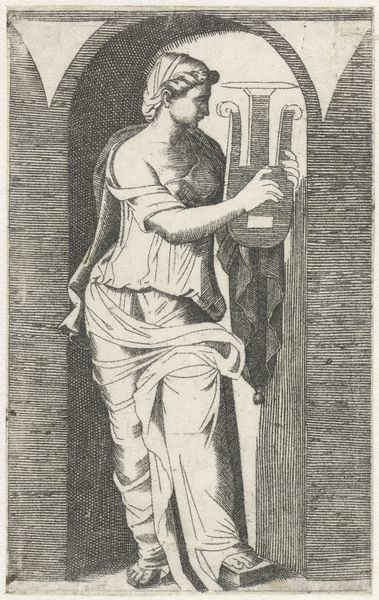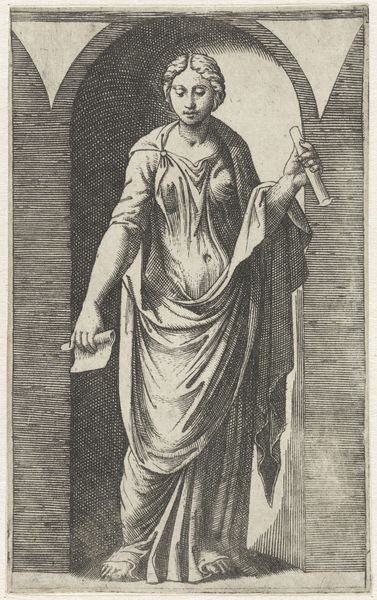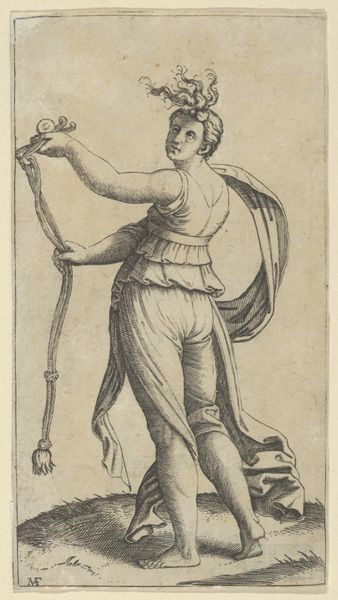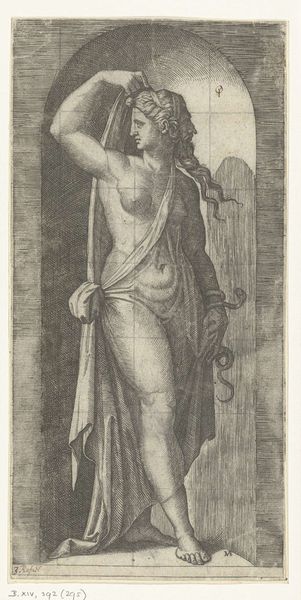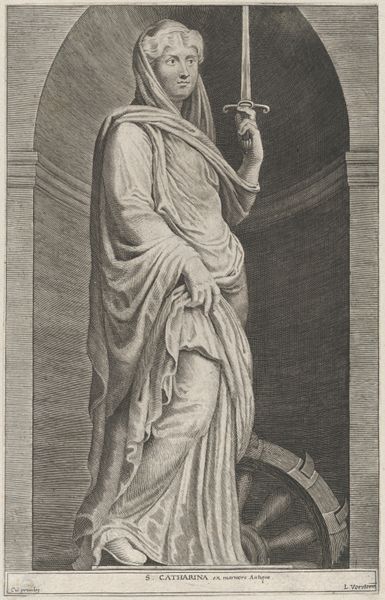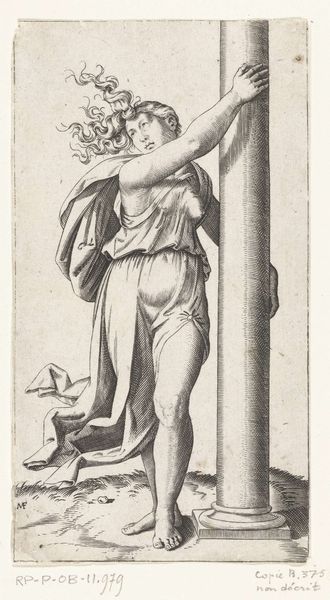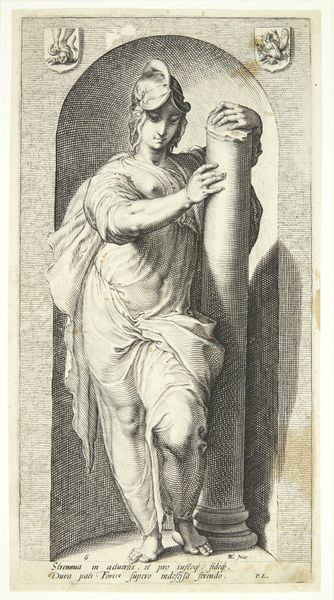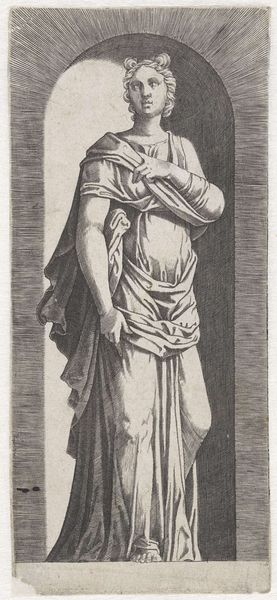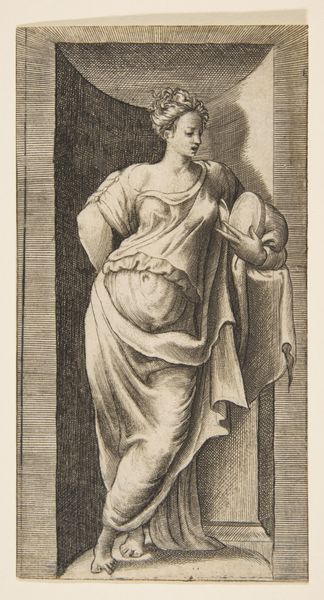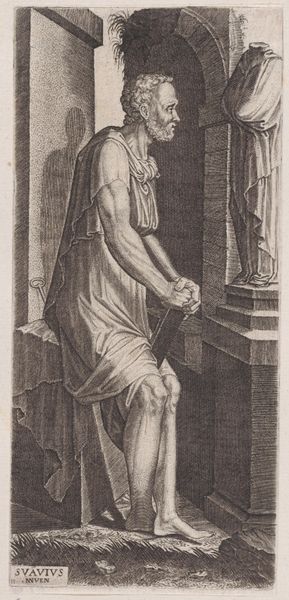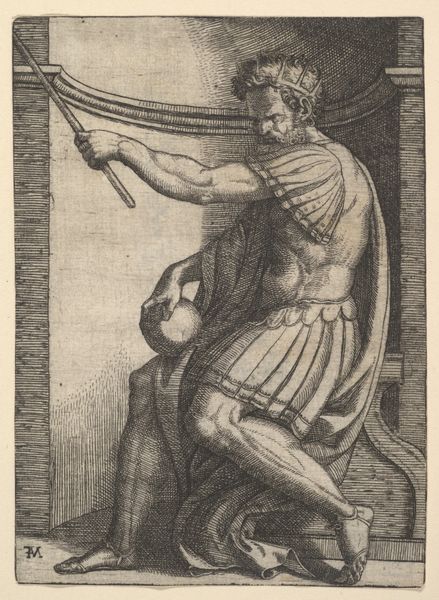
Justice personified by a young woman holding a sword in her raised right hand, scales in her left, from 'The Virtues' 1510 - 1520
0:00
0:00
drawing, print, engraving
#
drawing
#
medieval
#
allegory
# print
#
figuration
#
line
#
history-painting
#
italian-renaissance
#
engraving
#
sword
Dimensions: 8 7/16 x 4 1/4 in. (21.4 x 10.8 cm)
Copyright: Public Domain
Editor: Here we have "Justice personified by a young woman holding a sword in her raised right hand, scales in her left, from 'The Virtues'," an engraving by Marcantonio Raimondi, dating from 1510 to 1520. I'm struck by the figure's determined pose; she seems to be stepping forward, ready to act. What do you see in this piece? Curator: This image resonates deeply with the history of symbols. The figure of Justice, the sword, the scales – these aren’t merely objects. They are containers of collective memory. Look at the contrapposto, a conscious reference to classical antiquity, revived during the Italian Renaissance, indicating a turning away from the medieval and an embracement of new aesthetic values. The sword suggests power, authority, and enforcement of law, but consider also the psychological weight of such power. Do you notice anything about *how* she holds it? Editor: Yes, the sword is held high, almost as a beacon? Curator: Precisely. What is illuminated? Justice is less about retribution, and more about seeking an ideal truth. How does that interact with what the scales carry? That delicate balance, where right and wrong are weighed not simply by objective measure but within a context. How does the ideal translate into real social dynamics, the play of power, privilege, and perspective, visible in Renaissance society? What is visible, and invisible? What must the viewer bring with them, as cultural understanding and knowledge to comprehend this? Editor: I hadn't considered that – that understanding the image depends so much on shared cultural knowledge. I was mainly focused on the aesthetic and allegorical aspects. Curator: Indeed, this isn't simply a portrait but a carefully constructed presentation of an ideal. Raimondi uses the language of symbols to explore a specific and long tradition and idea, inviting a conversation that extends far beyond the lines of the print itself, linking it to human cultural inheritance across eras. Editor: It’s fascinating how much is packed into what seems at first a straightforward image. Curator: Absolutely, and now that we see more deeply into its layered nature, maybe we have developed some symbolic interpretation through fresh eyes.
Comments
No comments
Be the first to comment and join the conversation on the ultimate creative platform.
